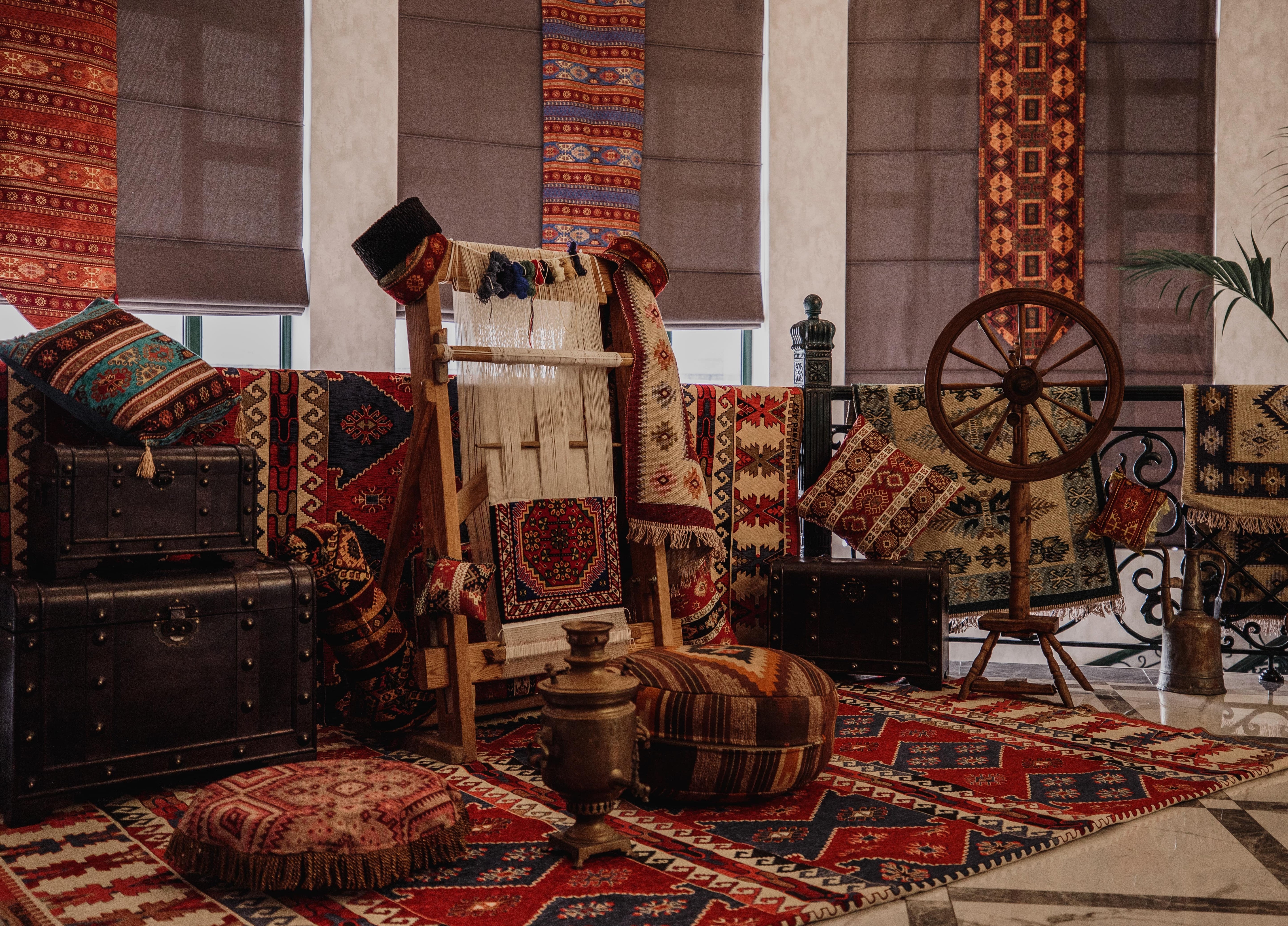5 Common Rug Buying Mistakes and How to Avoid Them?
Rugs hold the power to transform a room, adding warmth, color, and personality. However, choosing the perfect rug is no simple task, and many homeowners fall into common pitfalls along the way. By avoiding these mistakes, you can ensure that your investment not only enhances your space but also stands the test of time. Let’s recall the top five rug-buying mistakes and how to sidestep them.
1. Choosing the Wrong Size
One of the most frequent errors is selecting a rug that’s too small or too large for a space. A rug that’s too small can make a room feel disjointed, while one that’s too large can overwhelm the space.
How to Avoid It: Measure your room and furniture layout before shopping. For living rooms, ensure the rug accommodates all the furniture’s front legs, or preferably all legs for a cohesive look. In dining areas, choose a rug that extends at least 24 inches beyond the table’s edges to accommodate chairs. For bedrooms, place rugs strategically under the bed, allowing ample space to step onto it. Using a properly sized rug creates balance and brings the room together, enhancing its overall aesthetic.
Additionally, consider how the rug’s size affects traffic flow. A rug that’s too small in a hallway or entryway might feel awkward, while one that’s too large can make the space look cramped. Accurate measurements ensure the rug fits seamlessly into your space and complements your furniture layout.
2. Ignoring Material Considerations
The material of a rug determines its durability, maintenance, and feel underfoot. Choosing the wrong material for your lifestyle can lead to regret.
How to Avoid It: It’s a prerequisite to understand the pros and cons of different rug materials. Wool rugs offer durability and softness, making them ideal for high-traffic areas. Synthetic options, like polypropylene, are budget-friendly and stain-resistant and are great for families with kids or pets. Natural fibers like jute add texture but are less suitable for damp environments. Match the material to the room’s function and your maintenance preferences.
For example, a living room might benefit from a plush wool rug that’s both cozy and resilient, while a kitchen or bathroom could use a low-maintenance, washable rug. If sustainability is a priority, consider handwoven rugs made from organic materials. Selecting the right material ensures your rug remains beautiful and functional for years.
3. Overlooking Rug Pads
Skipping a rug pad might seem inconsequential, but it can lead to slipping hazards and faster wear and tear.
How to Avoid It: Invest in a high-quality rug pad tailored to your flooring type. Rug pads prevent movement, protect your floors, and add cushioning for a more comfortable feel. They also help rugs maintain their shape over time, extending their lifespan.
Rug pads come in various materials, including felt, rubber, or a combination of both. For hardwood floors, non-slip pads prevent scratches and sliding. On carpeted surfaces, thinner pads help stabilize the rug. Beyond functionality, rug pads can enhance the overall feel underfoot, adding an extra layer of comfort that elevates your daily experience.
4. Prioritizing Style Over Functionality
It’s easy to fall in love with a rug’s design, but if it doesn’t suit your lifestyle, you might end up regretting the purchase.
How to Avoid It: Balance aesthetics with practicality. If you have a busy household, opt for durable and easy-to-clean options, like washable rugs or low-pile synthetic fibers. In quieter spaces, indulge in intricate patterns or handwoven textures. Always consider how the rug will function in your specific room.
For high-traffic areas, consider darker colors or patterned rugs that hide dirt and stains. In contrast, light-colored rugs work well in bedrooms or low-traffic zones where spills are less likely. Functionality ensures your rug’s beauty isn’t compromised by everyday use. Finding a rug that meets both your style and practical needs ensures long-term satisfaction.
5. Forgetting to Test Colors and Patterns
Rugs that look stunning in a showroom or online may not translate well in your home due to lighting and surrounding decor.
How to Avoid It: Request samples or use augmented reality apps to visualize the rug in your space. Pay attention to how the rug’s colors interact with your walls, furniture, and overall theme. Test it in natural and artificial lighting to ensure it complements your decor seamlessly.
When considering patterns, think about the room’s scale and existing decor. A bold geometric rug can anchor a minimalist room, while a subtle floral design enhances a traditional aesthetic. Testing the rug in your space minimizes the risk of clashing colors or overwhelming patterns, ensuring it integrates harmoniously into your home.
Bonus Tips for a Seamless Rug Buying Experience
- Budget Wisely: Quality rugs can be an investment. Set a budget that balances quality and style, prioritizing durability for high-traffic areas.
- Consider Maintenance: Some rugs require professional cleaning, while others can be spot-cleaned at home. Choose a rug that fits your maintenance routine.
- Think About Longevity: Trends come and go, but classic designs often stand the test of time. Choose a rug that you’ll love for years to come, even as your decor evolves.
Conclusion
Avoiding these common rug-buying mistakes ensures you select the perfect piece for your home. By focusing on size, material, functionality, and thoughtful placement, you’ll find a rug that enhances your space and reflects your personal style. Whether it’s an elegant vintage rug, a durable Annie Selke design, or a bold accent piece, the right rug will elevate your home decor and bring comfort to your life. Choose wisely and enjoy the transformative power of a well-chosen rug!



